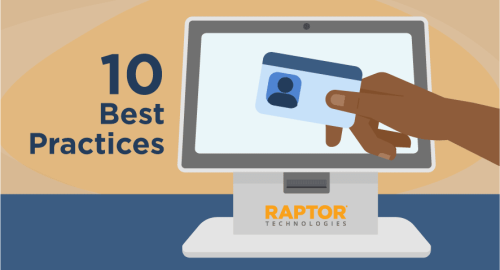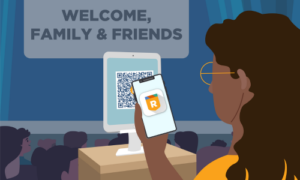Schools are tasked with guaranteeing students’ safety for 6+ hours a day. During that entire period, it’s paramount for school districts to know exactly who they’re letting into the school building to allow students, parents, and staff peace of mind.
With over 760,000 registered sex offenders and approximately 1,433 reported family abductions each year, school visitor screening is more important than ever before. Now is the time for school districts to tighten up their visitor monitoring practices.
Here are ten top tips every school needs to enhance their security practices and keep students safe from unwelcome visitors.
1. Develop detailed policies.
Every school needs a detailed, written visitor management policy – period. Schools and their emergency response teams should give careful thought to each element of their visitor policy. Some of the questions your district may want to consider include:
- What custom databases should we screen visitors against?
- What forms of ID will you accept from visitors?
- Which entrances will allow visitors?
- Who will be responsible for screening visitors?
- Who will be notified in the event of a positive offender match?
- What will a visitor be told if they cannot be granted entry?
2. Screen every visitor.
In a perfect world, no school would allow an unscreened visitor on the premises. The most powerful visitor management systems instantly screen each visitor’s government-issued ID against the sex offender registries in all 50 states. With a top-of-the-line visitor management system, schools can also run visitor data against custom databases, allowing them to screen visitors according to their own policies and guidelines.
3. Track entrants by role.
Parents or guardians are rarely the only visitors allowed on school grounds. Districts may also see traffic from approved vendors, contractors, volunteers, and student teachers. The best visitor management programs distinguish between entrants, allowing schools to categorize visitors by role. Using Raptor, you can use this information to generate reports summarizing activity from each type of visitor.
4. Provide detailed visitor badges.
The importance of badges in visitor management cannot be overstated! At a glance, badges allow school personnel the confidence that a visitor has been screened and approved. Likewise, staff know instinctively that a visitor without a badge presents a safety risk to their students. Ideally, visitor badges should print with the visitor’s name, role, photo, destination, and date and time of entry. Districts can also color code their visitor badges or include a barcode to accelerate check-in.
5. Release students only to approved guardians.
All visitor management systems should keep track of who is approved to pick up a particular student, and when. This is especially necessary as custody issues become more and more prevalent. In 78% of abduction cases, the child’s abductor was the noncustodial parent or guardian. Many schools make the mistake of assuming that a child’s status as the parent or guardian means they are allowed to remove the student from school grounds. This misunderstanding results in thousands of missing persons cases each year – and can be prevented by a robust visitor management policy.
6. Protect student and visitor data.
Visitor management requires schools to collect a treasure trove of student and visitor data. However, as essential as this data is to keeping students safe, it’s equally as important to safeguard your school community’s private information. According to the Family Educational Rights and Privacy Act (FERPA), your vendor should not be allowed to share data with any third parties, and should limit data usage to logging visitors and conducting their screenings.
7. Integrate with your emergency management system.
Does your school have a plan for reacting to unwelcome visitors? Prepare for the worst by integrating your visitor management system with your emergency management system, allowing for a seamless response to potential intruders. Additionally, this safeguard allows you to account for all logged visitors in the event of an emergency, enhancing your school’s reunification procedures during evacuation.
8. Conduct authorized and unauthorized entrance tests.
It isn’t enough for schools to set up visitor management systems. They must also conduct systematized intruder assessments, for both authorized and unauthorized visitors. For unauthorized entrances, you should take note of all the opportunities an intruder may have to enter the school (for example, tagging along behind students or staff as they enter the building). For authorized entrances, make sure to test how staff react to a refusal to follow visitor protocols, such as scanning their government-issued IDs.
9. Troubleshoot common problems.
Every school needs a plan for handling the most common issues with visitor management. These include handling undocumented persons or persons without IDs, determining when to allow known offenders (who may be parents or guardians), and handling angry visitors or those who refuse to provide their information. For Raptor’s tips, check out our blog post on handling six common school visitor issues and conflicts.
10. Choose the right visitor management system.
The right visitor management system ensures all of these best practices and more. Raptor’s visitor management technology eliminates uncertainty, by allowing districts to know exactly who’s in their schools and giving visitors a self-driven check-in protocol they can follow every time they visit. Schedule a demo to learn more about Raptor, and why it is the leading provider of integrated school safety solutions!
Related Resources
Guide to K-12 Visitor Management
Best Practices for Year-Round Safety








